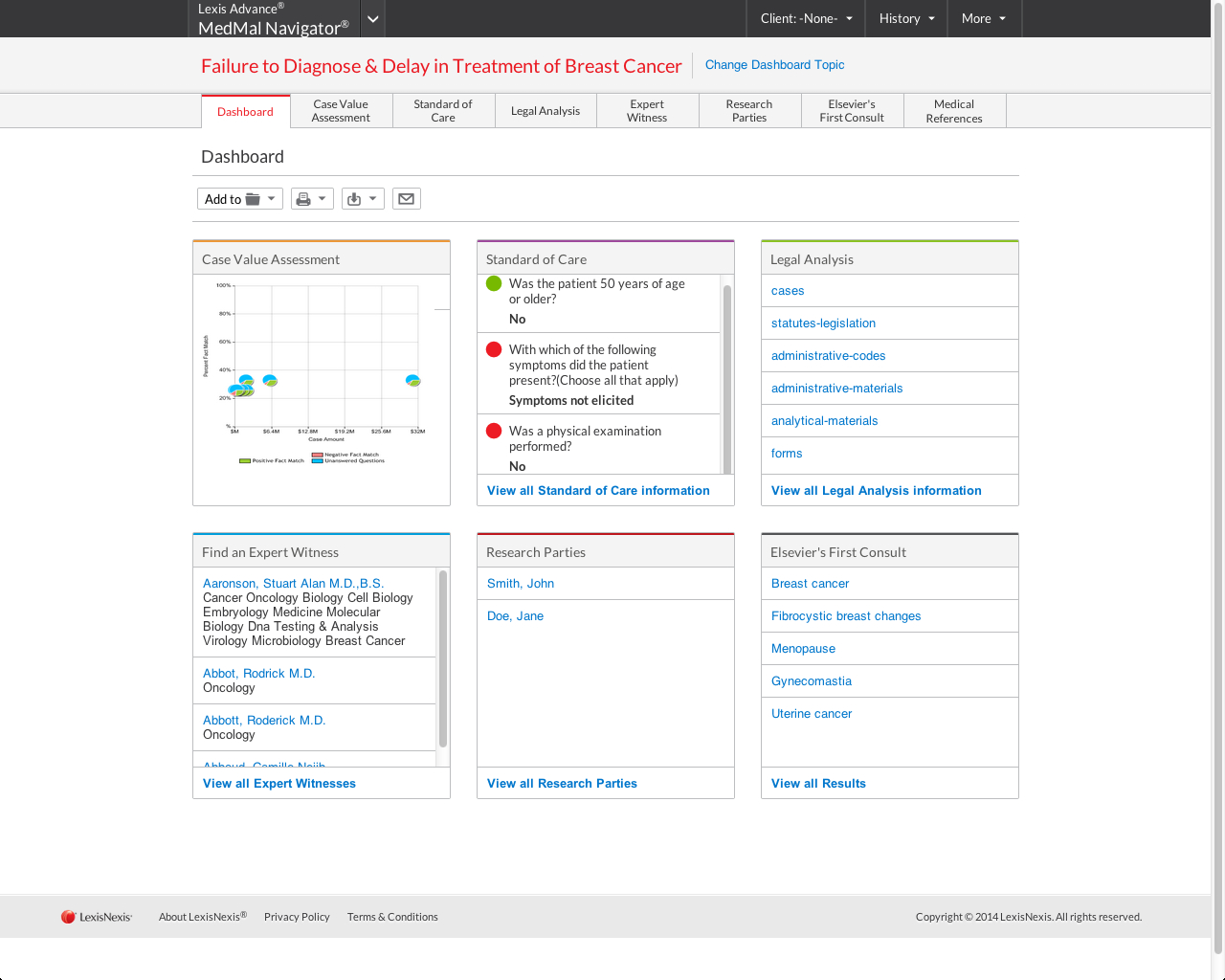LexisNexis AI Platform: Complete Buyer's Guide
Comprehensive legal AI solution for law firms and corporate legal departments
LexisNexis AI Platform represents a comprehensive legal AI solution positioning itself at the forefront of the rapidly expanding legal technology market, which grew from $1.45 billion in 2024 to projected $3.90 billion by 2030[42]. The platform combines generative AI capabilities with LexisNexis's established legal database infrastructure, targeting law firms and corporate legal departments seeking to automate research, drafting, and document analysis workflows.
Market Position & Maturity
Market Standing
LexisNexis AI Platform operates from a position of established market leadership within the rapidly expanding legal technology sector, which demonstrates explosive growth trajectories projected to expand from $605.21 million in 2024 to $1.55 billion by 2033[1].
Company Maturity
LexisNexis leverages decades of legal database infrastructure and established customer relationships, with the platform representing a strategic evolution of their traditional legal research capabilities into AI-powered solutions.
Growth Trajectory
The broader legal AI market, valued at $1.45 billion in 2024, is projected to reach $3.90 billion by 2030, driven primarily by generative AI capabilities and predictive analytics integration[7].
Industry Recognition
Market validation comes through comprehensive customer development collaboration involving more than 50 organizations including Am Law 50 firms, small law firms, corporations, government offices, and law schools such as UC Berkeley and University of Notre Dame[58].
Strategic Partnerships
Strategic partnerships and ecosystem positioning include integration with major document management systems like iManage, NetDocuments, and SharePoint, enabling seamless workflow integration for organizations with established infrastructure investments[58].
Longevity Assessment
Enterprise adoption patterns reflect market maturity, with Forrester Consulting studies documenting 344% ROI for large law firms and 284% ROI for corporate legal departments over three years[51][52].
Proof of Capabilities
Customer Evidence
Customer success evidence includes Maguire Legal's documented 50% reduction in research and drafting time, translating to 15 hours saved weekly and 25% savings in employee costs[59].
Quantified Outcomes
Forrester Consulting validation showing large law firms achieving $30 million revenue growth over three years with 344% ROI[51].
Case Study Analysis
Corporate legal departments demonstrate similar value realization through Forrester's separate study showing $1.2 million in benefits and cost savings with 284% ROI over three years[52].
Market Validation
Market validation comes through customer development collaboration involving more than 50 organizations including Am Law 50 firms, small law firms, corporations, government offices, and law schools such as UC Berkeley and University of Notre Dame[58].
Competitive Wins
Stanford University's independent research provides critical performance validation, with Lexis+ AI correctly answering 65% of queries compared to Westlaw's AI-Assisted Research achieving only 42% accuracy[56].
Reference Customers
Customer development collaboration involved more than 50 organizations including Am Law 50 firms, small law firms, corporations, government offices, and law schools such as UC Berkeley and University of Notre Dame[58].
AI Technology
LexisNexis AI Platform leverages a sophisticated multi-model AI architecture incorporating Claude 3 models by Anthropic, GPT-4o, and fine-tuned Mistral 7B models, while integrating proprietary Shepard's Knowledge Graph for enhanced accuracy and legal precedent grounding[48].
Architecture
The platform's technical architecture delivers three distinct AI capability layers: extractive AI for finding relevant results, generative AI for content creation, and agentic AI for autonomous task completion[58].
Primary Competitors
Primary competitors include Thomson Reuters (through Casetext acquisition) offering comparable AI capabilities with different pricing structures and integration approaches, and Westlaw's AI-Assisted Research which demonstrates significantly lower accuracy rates in independent testing[56].
Competitive Advantages
Competitive advantages include the platform's multi-model approach incorporating Claude 3, GPT-4o, and fine-tuned Mistral 7B models, offering flexibility and optimization potential compared to single-model competitors[48].
Market Positioning
Market positioning shows LexisNexis leveraging established legal database infrastructure and customer relationships, while competitors like Thomson Reuters emphasize innovation through acquisitions and emerging platforms focus on cost efficiency and implementation simplicity.
Win/Loss Scenarios
Win/loss scenarios favor LexisNexis when organizations require comprehensive legal research capabilities, proven accuracy benchmarks, and enterprise-grade security frameworks.
Key Features

Pros & Cons
Use Cases
Integrations
Pricing
Featured In Articles
Comprehensive analysis of AI Formatting Assistants for Legal/Law Firm AI Tools for Legal/Law Firm AI Tools professionals. Expert evaluation of features, pricing, and implementation.
How We Researched This Guide
About This Guide: This comprehensive analysis is based on extensive competitive intelligence and real-world implementation data from leading AI vendors. StayModern updates this guide quarterly to reflect market developments and vendor performance changes.
60+ verified sources per analysis including official documentation, customer reviews, analyst reports, and industry publications.
- • Vendor documentation & whitepapers
- • Customer testimonials & case studies
- • Third-party analyst assessments
- • Industry benchmarking reports
Standardized assessment framework across 8 key dimensions for objective comparison.
- • Technology capabilities & architecture
- • Market position & customer evidence
- • Implementation experience & support
- • Pricing value & competitive position
Research is refreshed every 90 days to capture market changes and new vendor capabilities.
- • New product releases & features
- • Market positioning changes
- • Customer feedback integration
- • Competitive landscape shifts
Every claim is source-linked with direct citations to original materials for verification.
- • Clickable citation links
- • Original source attribution
- • Date stamps for currency
- • Quality score validation
Analysis follows systematic research protocols with consistent evaluation frameworks.
- • Standardized assessment criteria
- • Multi-source verification process
- • Consistent evaluation methodology
- • Quality assurance protocols
Buyer-focused analysis with transparent methodology and factual accuracy commitment.
- • Objective comparative analysis
- • Transparent research methodology
- • Factual accuracy commitment
- • Continuous quality improvement
Quality Commitment: If you find any inaccuracies in our analysis on this page, please contact us at research@staymodern.ai. We're committed to maintaining the highest standards of research integrity and will investigate and correct any issues promptly.